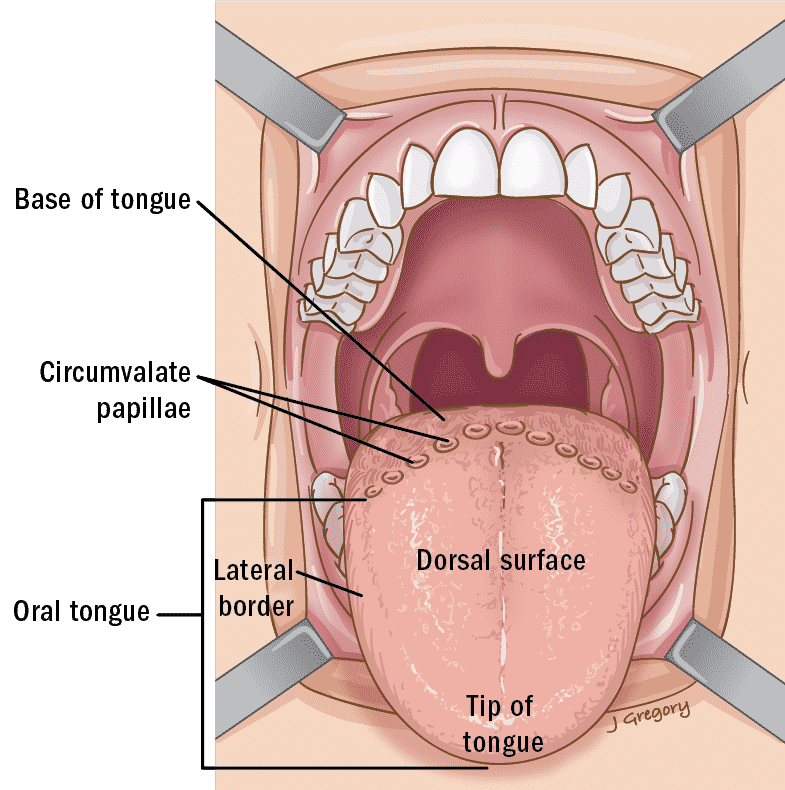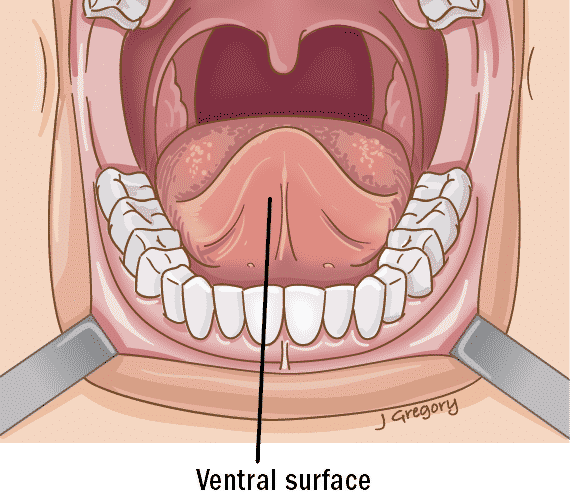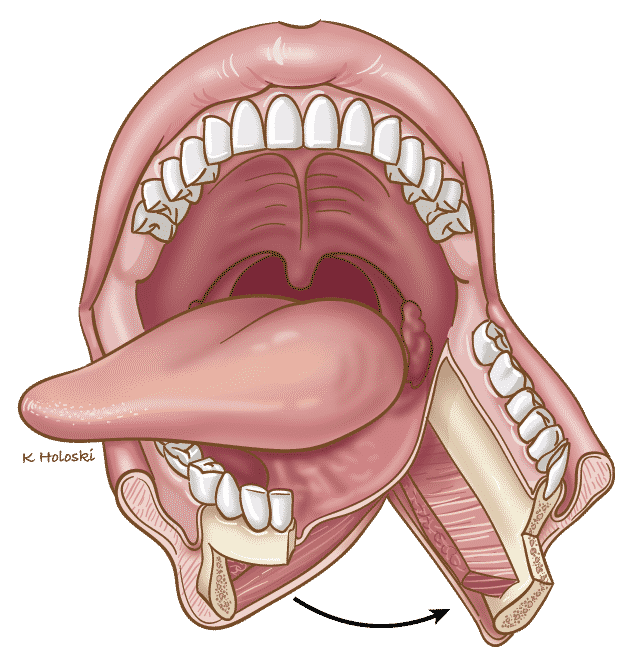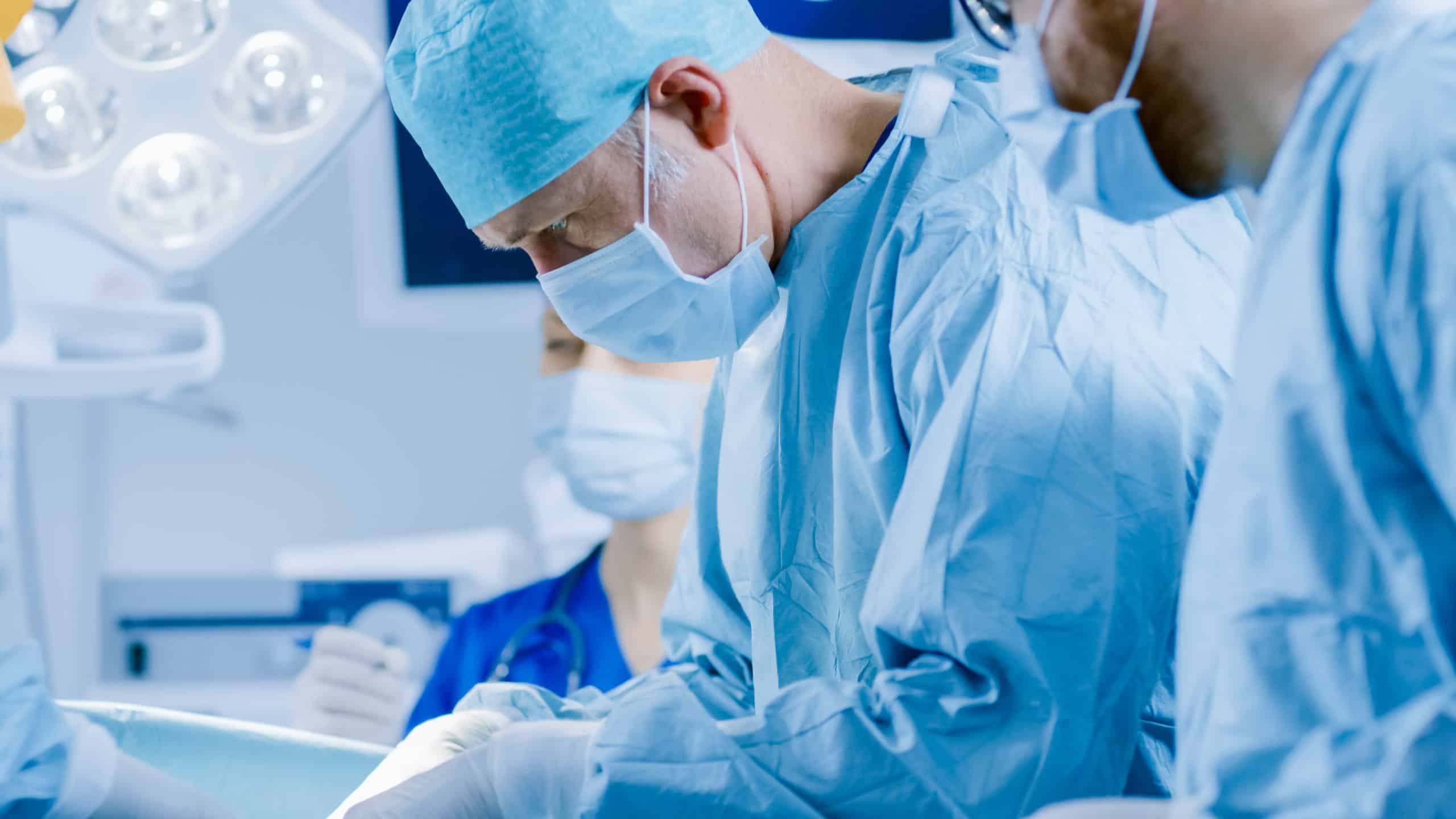A glossectomy is a procedure to remove part or all of the oral tongue.
Most often, surgeons may perform this operation to treat tongue cancer, but they may sometimes use it to treat cancer that has spread from other parts of the mouth. Depending on how much of the tongue needs to be removed, a glossectomy may cause changes in speaking and swallowing. It is helpful to be informed of the possible outcomes so that you can manage your expectations going into the surgery.
You’re Not Alone
Hear more stories of hope, determination, and triumph from other cancer survivors.
What to Expect
Before Surgery
Doctors will give their patients specific instructions regarding what to do before surgery. In general, patients should not eat or drink anything (except essential medications) any time after midnight the night before surgery. Patients should tell their doctor if they begin to feel sick before surgery.
For a glossectomy specifically, a patient should be prepared for changes in the way they speak and swallow. The extent of the change will depend on a number of factors such as how much of the tongue and what portion of the tongue is removed, and what type of reconstruction is performed.
The Surgery
On the day of surgery, the patient will likely be asked to arrive at the hospital a few hours before the scheduled operation. During this time, nurses will check the patient in and anesthesiologists will ensure that everything is safe for general anesthesia. The surgeon will also come see the patient to review the plan and answer any last minute questions.
For all of these cases, the patient will be put completely to sleep with general anesthesia. Patients may or may not require a tracheotomy and/or feeding tube to aid breathing and eating, depending on the extent of the glossectomy and reconstruction.
Types of Surgery
- Partial Glossectomy
The removal of a small portion (less than half) of the tongue (i.e. a small part of the side or tip). - Hemiglossectomy
The removal of approximately half of the tongue. This is performed for larger tumors. - Total Glossectomy
The removal of the entire tongue, including the base of the tongue. A total glossectomy may be performed along with a total laryngectomy in order to prevent aspiration (breathing food or drink into lungs) and pneumonia. A total glossectomy will require a major reconstructive surgery.

Other associated procedures might include a tracheotomy, feeding tube placement, neck dissection, floor of mouth resection or mandibulectomy. In addition, reconstruction will depend on the amount of tongue and nearby structures that are removed. Reconstructive options might be healing by secondary intention (letting it heal on its own), primary closure (placing stitches to close up the tongue that was removed), a skin graft or a flap reconstruction.
Once the tumor is removed, the surgeon will send the margins (the tissue around the tumor) for immediate frozen section analysis to see if there are any cancerous cells remaining. Once the margins are reported as free of cancer, the reconstruction will begin. At the end of the procedure, the patient will wake up from anesthesia.

Different Treatment Approaches
The glossectomy can be done via a few different approaches depending on what part of the tongue needs to be removed, how much of the tongue needs to be removed, and what associated procedures might be required. These approaches are described in further detail below.
Transoral Robotic-assisted Surgery (TORS)
For tumors at the base of tongue or oropharynx, a robotic-assisted surgical removal through the mouth might be an option.
Transoral Laser Microsurgery (TLM)
In this technique, a laryngoscope placed through the mouth exposes various parts of the base of tongue. A laser is then used to cut around the tumor to remove it.
Mandibulotomy
For tumors in the base of the tongue or the back part of the oral tongue, a surgeon might recommend a mandibulotomy. This involves making a cut at or near the middle of the lower jawbone and swinging the jaw to the side to expose the back part of the tongue or the floor of mouth. The jaw is usually put back into alignment and fixed into position with a plate and screw technique similar to what is commonly used for fracture repair.

Transcervical Approach Combined with a Pharyngotomy
This is another method to access the back part of the tongue (base of the tongue) through an incision in the pharyngeal wall. In this technique, an incision is made in the neck that provides access to the pharynx through an anterior pharyngotomy, which is performed just above the level of the hyoid bone. In doing so, the surgeon is able to access the base of tongue and the rest of the oropharynx. A lateral pharyngeal approach to the base of tongue or the hypopharynx is performed through the neck, and entry into the pharynx is accomplished through the pyriform sinus. These 2 approaches permit tumors of the base of tongue or other portions of the pharynx to be removed without having to cut the jawbone (as in a mandibulotomy).
Recovery & Aftercare
The recovery course will depend on the extent of the surgery and reconstruction. With some surgeries, a patient could go home after a few hours of observation in the recovery room while others might require a stay in the hospital for one to two weeks.
Once doctors determine that a patient no longer needs in-patient level care, they will be ready for discharge. While some patients can go home from the hospital with or without visiting nurses or receiving home care, others might go to a rehabilitation or skilled nursing facility for a short while before going home. The discharge planning team, which includes doctors, social workers, nurses and physical therapists, along with the patient and their family, will determine the best place for the patient to go once they’re ready to leave the hospital.

Download This Section
Feel free to download and print this page.
It’s free for personal use and to share with others you think might benefit from the information provided.
Risks
As with any procedure, there are risks in undergoing a glossectomy that patients need to be aware of. The smaller the region of the removed tongue, the lesser the chance of many of these complications, especially difficulty with speaking and swallowing.
- Bleeding (including Hematoma)
If there is severe bleeding after the procedure, the surgeon might need to quickly take the patient back to the operating room to stop the bleeding. However, some mild bleeding or small blood collections under the skin (hematomas) can be observed. - Infection
Because the tongue has a very good blood supply, infections of the tongue are quite rare. Still, as with any surgical procedure, there is always a risk of an infection after the surgery, particularly if the glossectomy is associated with additional procedures that might connect the mouth with the neck. This might require antibiotics and/or drainage of the infection. - Dysarthria (Difficulty Speaking)
The extent that a patient’s speech is affected will depend on how much and what part of the tongue is removed. Patients should work with a speech and swallowing therapist to improve their function. - Dysphagia (Difficulty Swallowing)
The extent that a patient’s swallowing is affected will depend on how much and what part of the tongue is removed. Patients who are having difficulty should work with an experienced speech and swallowing therapist to improve their function. - Aspiration
This occurs when a patient breathes a foreign substance, often saliva and/or food and drink, into their airway. Having saliva and/or food and drink pass into the lungs can lead to pneumonia. Patients with large resections and reconstructions are at higher risk for this problem to occur. Patients who develop a cough associated with eating or drinking should be suspected of having aspiration which should be evaluated with a modified barium swallow. If this problem is identified and cannot be overcome with therapy, then a feeding tube may need to be placed through the nose or directly into the stomach. - Salivary Fistula
This term is used to describe when saliva is leaking from the mouth or pharynx (throat) into the neck. The chances of this increase if a patient has had previous treatment including radiation and/or chemotherapy due to impaired healing.

Top Questions for Your Doctor
Access our list of the most important questions to ask your physician at your next appointment.











